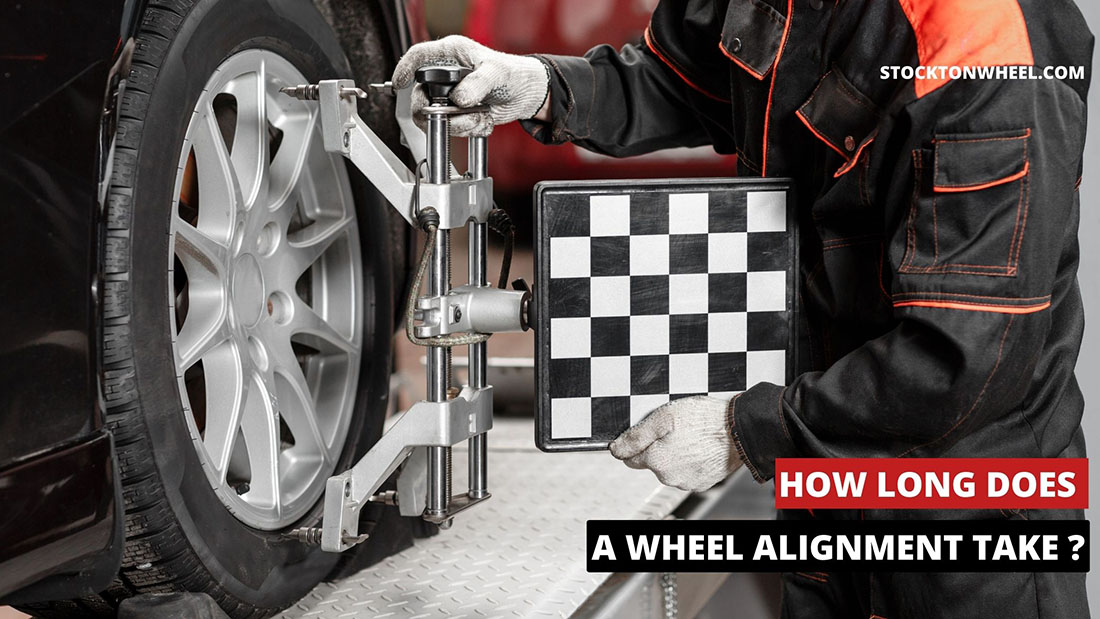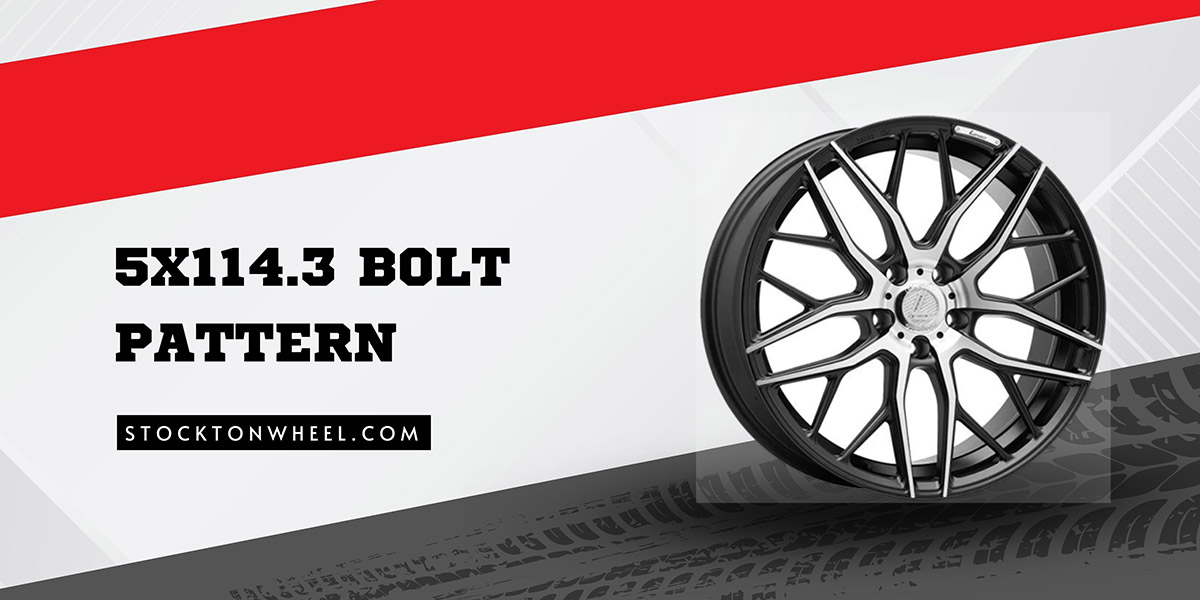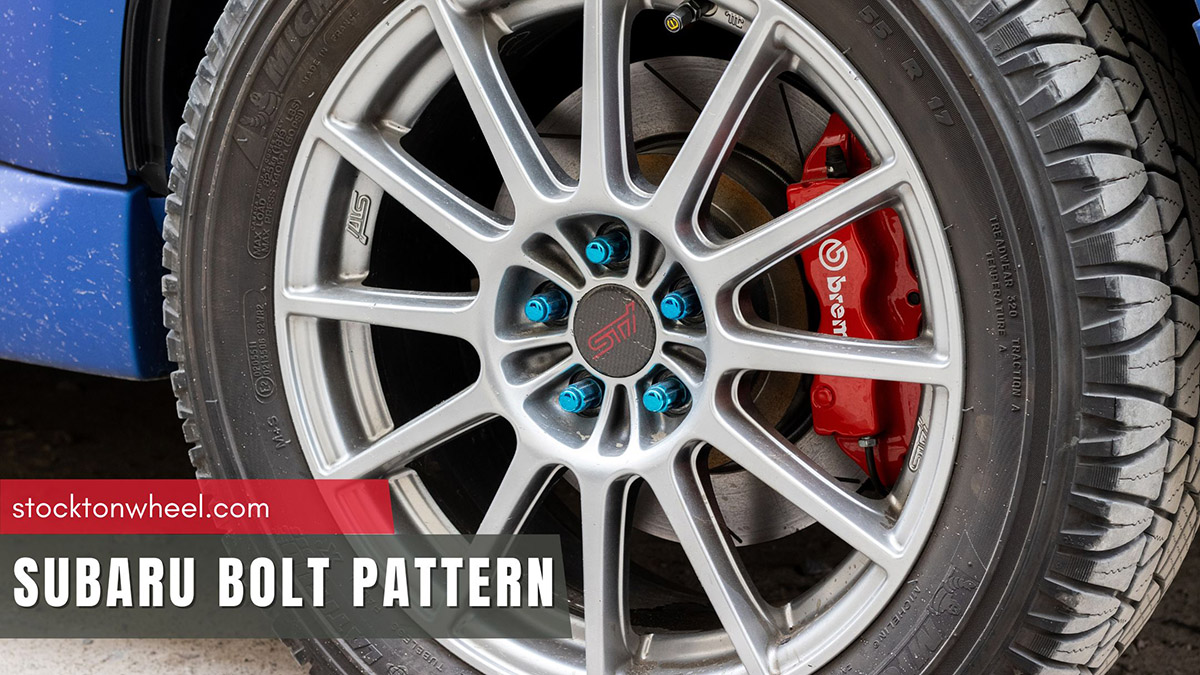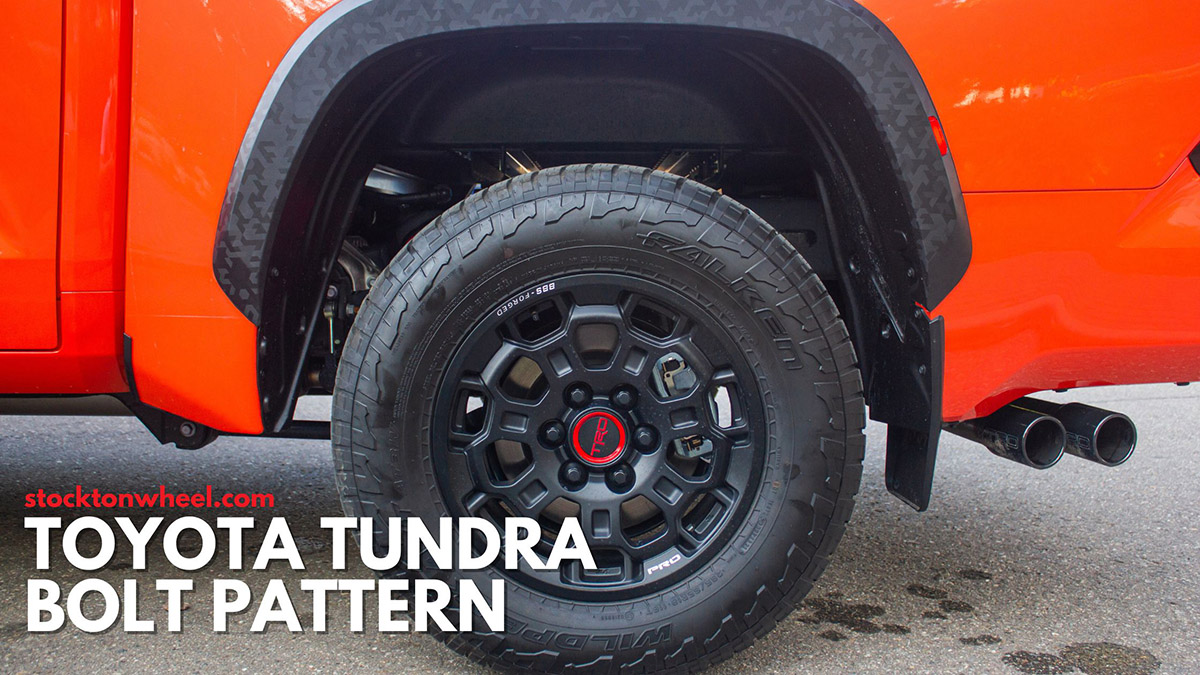Are alignments necessary? When it comes to maintaining your vehicle’s performance and safety, wheel alignment is a crucial aspect of maintenance. But have you ever wondered how long the process takes? In this blog, we’ll dive into the factors that influence the duration of a wheel alignment, shedding light on what to expect.
In this article:
How Long Does It Take To Do An Alignment?
The time for a wheel alignment varies but typically ranges from 30 minutes to 1 hour (sometimes more), depending on the type and amount of alignment, the suspension condition, and the vehicle’s complexity.
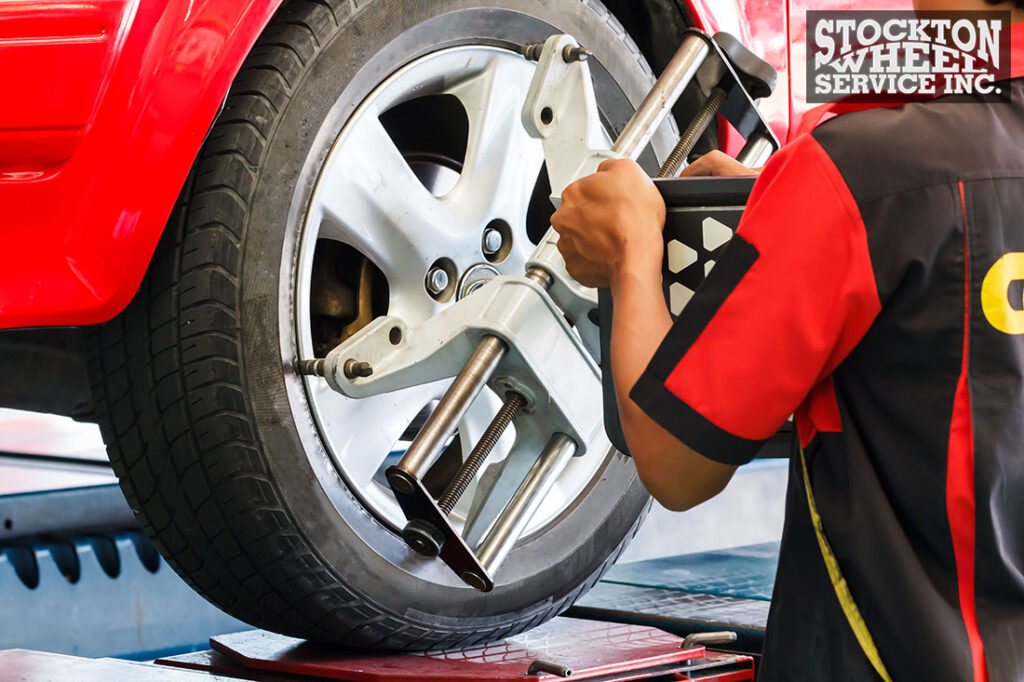
2 Wheel Alignment
A 2-wheel alignment, also known as a front-end alignment, focuses on aligning the front wheels of your vehicle. This process typically takes around 30 minutes to an hour. It’s a quicker option when your vehicle’s rear wheels are in good alignment, and the front wheels are the primary concern.
4 Wheel Alignment
A four-wheel alignment service, or all-wheel alignment, addresses all four wheels of your vehicle. A 4-wheel alignment generally takes longer than a 2-wheel alignment, ranging from 45 minutes to 1.5 hours, depending on the complexity of the vehicle’s suspension system.
Toe N Go Alignment
The “Toe N Go” tire alignment is a revolutionary technology that can significantly reduce alignment time. By employing state-of-the-art equipment and techniques, this method allows for incredibly quick and precise alignments, often taking just 10 to 20 minutes. It is ideal for those seeking efficient service without compromising on accuracy.
Factors Affect Alignment Time
Several factors can influence the time it takes to perform a wheel alignment on a vehicle.
- Type of alignment: There are different types of wheel alignments, including two-wheel alignments (front or rear) and four-wheel alignments (all wheels). Four-wheel alignments typically take longer due to the additional work involved.
- Alignment method: Some alignment methods, like computerized alignments, are more precise and may take longer to complete than less advanced methods.
- Vehicle type: The size and complexity of the vehicle can impact alignment time. Larger vehicles or those with intricate suspension systems may require more time for alignment.
- Alignment technician’s experience: An experienced alignment technician can often perform the task more efficiently than a novice, potentially reducing the time required.
- Initial alignment condition: If a vehicle’s wheels are severely misaligned, it may take longer to bring them back into alignment than a vehicle with minor alignment issues.
How To Shorten The Alignment Time
Shortening the alignment time for your vehicle is a practical way to get back on the road quickly while ensuring the safety and performance of your vehicle. Here are three effective strategies to expedite the alignment process.
- Book in advance: Scheduling an appointment for a wheel alignment in advance allows the service center to allocate dedicated time for your vehicle. This can help minimize wait times and ensure that the technicians are ready to work on your car as soon as you arrive.
- Visit during off-peak hours: Opting for off-peak hours, such as after lunchtime or late in the afternoon, can significantly reduce the time you spend waiting for service. These times tend to have fewer customers, allowing for quicker turnarounds.
- Choose local stores: Consider visiting local alignment auto shops instead of larger, more reputed stores. Local auto repair shops often have a smaller customer base, which means they can provide personalized attention and quicker service. Additionally, they may be more flexible in accommodating your scheduling needs.
Why Is Wheel Alignment Necessary?
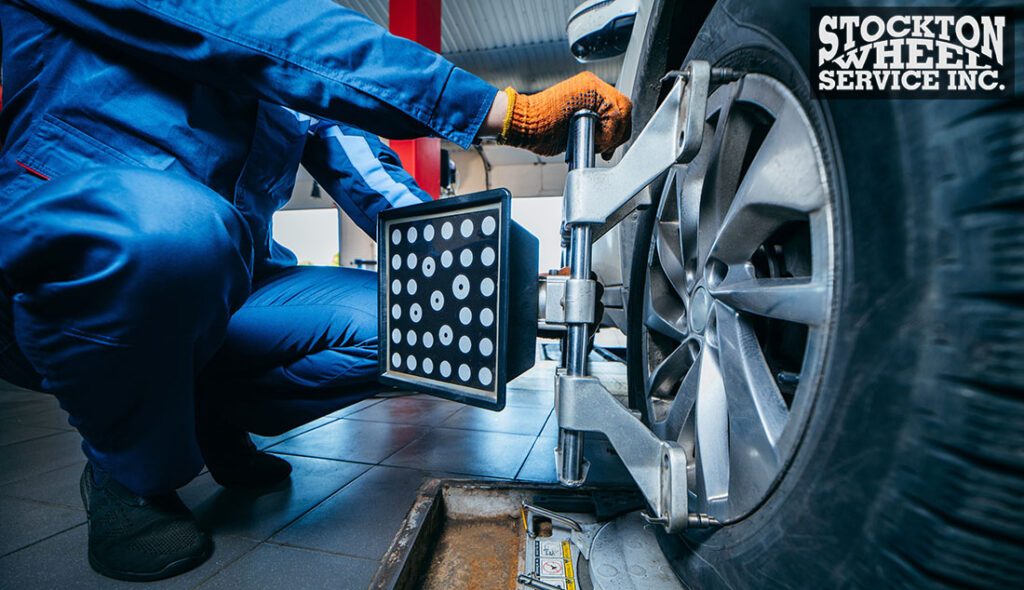
Wheel alignment is a crucial aspect of vehicle maintenance that often goes underestimated, as it enhances safety on the road. It involves adjusting the angles of your vehicle’s wheels to ensure they are parallel to each other and perpendicular to the ground according to the manufacturer’s specifications. This seemingly minor adjustment holds immense importance for several reasons.
When your wheels are aligned correctly, your vehicle tracks straight and true, reducing the risk of drifting or pulling to one side. This not only ensures your safety during daily driving but also becomes especially crucial in emergency situations.
This process also significantly impacts tire longevity. Misaligned wheels can cause excessive tire wear, leading to premature tire replacement and unnecessary expenses. A properly aligned vehicle, on the other hand, promotes even wear across all tires, extending their lifespan and saving you money in the long run.
Furthermore, alignment contributes to improved fuel efficiency. When your wheels are aligned, there is less resistance against the dirt road, which translates to better gas mileage. This means you’ll spend less on fuel and reduce your environmental footprint.
How Often Should You Get An Alignment?
In general, it’s advisable to have your vehicle’s alignment checked at least once every 2 or 3 years, equivalent to 24k – 36k miles. However, several circumstances might necessitate more frequent checks.
- New tires: After getting new tires installed, it’s essential to have an alignment done. This ensures that your fresh rubber starts off with proper alignment, maximizing their lifespan.
- Suspension work: If you’ve had any suspension components replaced or if you’ve been involved in an accident, it’s wise to get an alignment to ensure your wheels are correctly aligned.
- Uneven tire wear: When you notice uneven wear, such as one side wearing faster than the other, it’s a clear indication of misalignment, and you should have it checked and corrected promptly.
- Rough roads: Frequent aggressive driving on rough or poorly maintained roads can lead to alignment issues. In such cases, consider more frequent alignments to counter the effects of road conditions.
- Changes in driving habits: If your driving habits change significantly, such as hauling heavy loads regularly or frequently towing, this can affect alignment. Adjust your alignment schedule accordingly.
Frequently Asked Questions
How Long Can An Alignment Last?
A well-done alignment can last anywhere from 6,000 to 12,000 miles or longer under normal driving conditions. Still, the duration of a wheel alignment’s effectiveness varies depending on driving habits and road conditions. Regular maintenance checks are advisable to ensure your vehicle maintains proper alignment.
Will My Car Drive Better After Alignment?
Yes, your car will typically drive better after a wheel alignment. Proper alignment ensures even tire wear, better handling, improved fuel economy, reduced vibrations, and enhanced safety. It can result in a smoother, more stable, and more enjoyable driving experience, making it a worthwhile maintenance service.
Why Is My Car Shaking After Alignment?
Misalignment issues may have been inadequately corrected, or there might be other problems like unbalanced tires, worn suspension components, or bent wheels. It’s essential to have your vehicle inspected to pinpoint and address the underlying cause of the shaking.
The Bottom Line
The time it takes for a wheel alignment can vary, depending on factors such as the type of alignment, the vehicle’s complexity, and the alignment method used. Consulting with a professional alignment technician can provide you with a more precise estimate and ensure that your vehicle’s wheels are perfectly aligned for a safer and smoother ride.
See more:

